Carlton’s Kevin Hall clears the lines. (Inset): Anxious Pie fans, Jezza’s mark and Ron Barassi on the bench. Pictures: NFSA
Somewhere along the line, as generations changed, the title of greatest historical grand final seems to have shifted hands from the 1970 Grand Final between Carlton and Collingwood to the 1989 Grand Final.
With a Carlton-supporting father, it was lore in my childhood that 1970 was the greatest sporting event Australia had ever witnessed, like my generation talk about 1989.
But the natural ageing process, its black and white television presentation, and the lessening presence of the stars from 1970 over the last few decades has somehow pushed it back to another age. Many young fans would know nothing of its towering presence for earlier generations.
Maybe the time for that revision has come, as on Monday a special 24-minute film is released by the National Film and Sound Archive to mark the 50th anniversary of the momentous match.
Simon Smith, a curator from the NFSA, was curious when, amongst a collection of 16mm television prints that came into the NFSA’s Melbourne office a few years ago, he spied four reels labelled “1970 Grand Final”.
“I assumed they were just reels from the Channel 7 footage that older footy fans have come to know so well,” he says. “However, upon viewing it, it was clear that the commentary and images were different.
“Instead of Mike Williamson and Butch Gale, it was Ian Cleland and Geoff Leek, and the visual presentation was different to that Channel 7 footage we see on the ‘Footy Marathon’.”
What Smith had found was in fact the Channel 9 broadcast of the game, donated to the archive by a former television network technician.
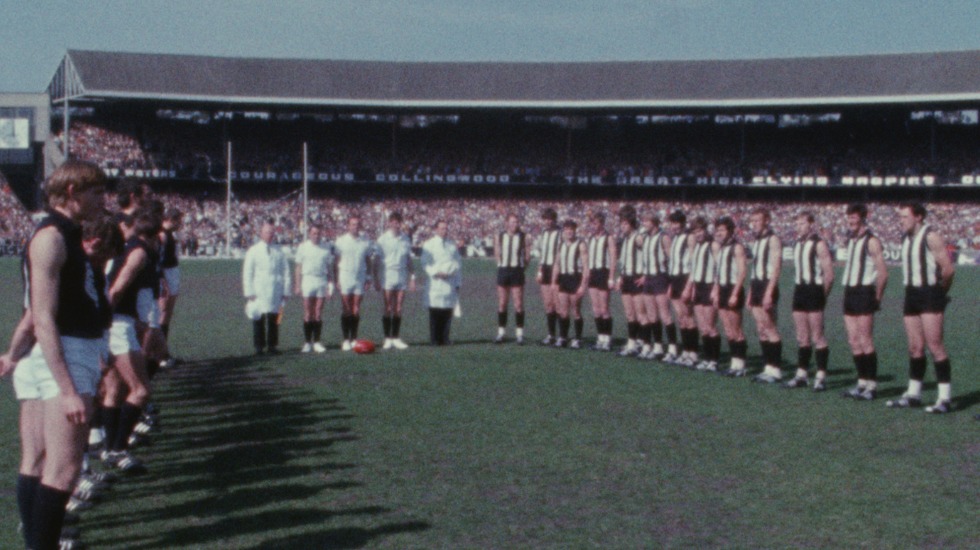
Carlton, Collingwood and the umpires line up for the playing of the national anthem.
These were times when the ABC and Channel 9 would also broadcast replays of VFL games in addition to Channel 7, which was to define itself with the game and eventually be its exclusive commercial broadcaster. This commentary and footage has rarely, if ever, been seen since it was broadcast 50 years ago.
This discovery piqued the interest of footy fan Smith of what else might be buried deep in the archives.
“Fortunately, there were other titles in our collection related to the 1970 Grand Final, which was quite unusual given that we didn’t appear to hold similarly rare material for other grand finals from that era,” he says.
So the search then started in earnest, and over the last 12 months, Smith and team digitised every reel of anything that might be related to the game to establish what they had.
Amongst these were unused action sequences shot in colour by Movietone Productions that were not included in their finished film “VFL Grand Final 1970”.
The biggest find, however, was “The Big Game 1970”, an entirely forgotten title put together by Rod Kinnear Productions. Kinnear had two years previously produced the wonderfully titled short film “She’s a Grouse Game” about the football fan ritual, but his 1970 film was the white whale that Smith had been looking for.
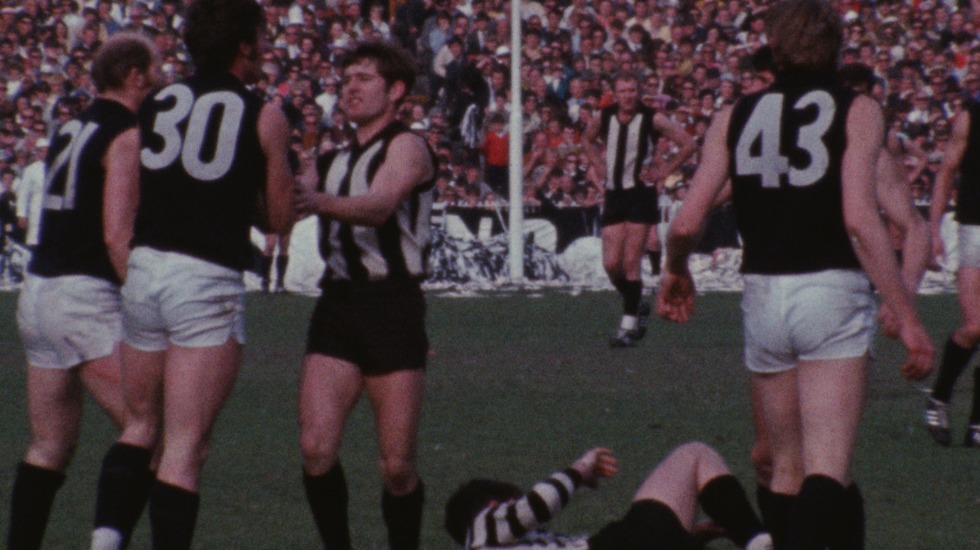
Carlton’s Vin Waite and Collingwood’s Wayne Richardson come to grips as Ross “Twiggy” Dunne hits the deck
“The Movietone film reels do not have the Jesaulenko mark (arguably the most famous grab in the game’s history) in colour, so we were ecstatic when the mark featured in ‘The Big Game 1970’. Now something substantial was taking shape,” says Smith.
A vinyl record was found of the 3KZ radio call, and then with the help of 3AW radio archivist Simon Owens, the original 3AW call was found. All were digitised and Smith and his colleagues decided to showcase their finds by producing all new highlights compilations for each half.
“The Channel 7 production and commentary is iconic and brilliantly put together by director Alf Potter,” says Smith. “So we wanted to be reverential to that as the base of what we put together, but then edit in the unseen colour sequences, the new angles and the rarely heard commentary to tell a more rounded story.”
The recreation is spectacular, using split screens of new angles and slow-motions that enhance the feats you may have come to know from the Channel 7 broadcast replays.
PLEASE HELP US CONTINUE TO THRIVE BY BECOMING AN OFFICIAL FOOTYOLOGY PATRON. JUST CLICK THIS LINK.
The total 24-minute package, now available to view on the NFSA website (see link below) tells the story of the game with added colour, both literally, and through vivid crowd shots you rarely see on the broadcasts of the era.

The crowd of 121,696 is a compelling starting point when arguing for this match’s claims as the best Grand Final. It was the greatest crowd at a sporting event in Australia and comfortably ahead of any Super Bowl crowd in the United States.
That historical context is immortalised even before the game itself, a rollercoaster ride between the two biggest supporter bases of the era.
A commanding 44-point half time lead to Collingwood fired by full forward pop idol of the day Peter McKenna, was all but obliterated in a 12-minute burst of seven goals by Carlton.
The Blues had been urged by coach Ron Barassi to handball at any opportunity to run the ball quicker in an effort to make up the seemingly insurmountable deficit, the message implicit that the quicker they played, the more time they’d have to peg back the Magpies.
Even then, Collingwood was to kick again and get back out to a 23-point lead early in the last quarter, before the Carlton avalanche recommenced.
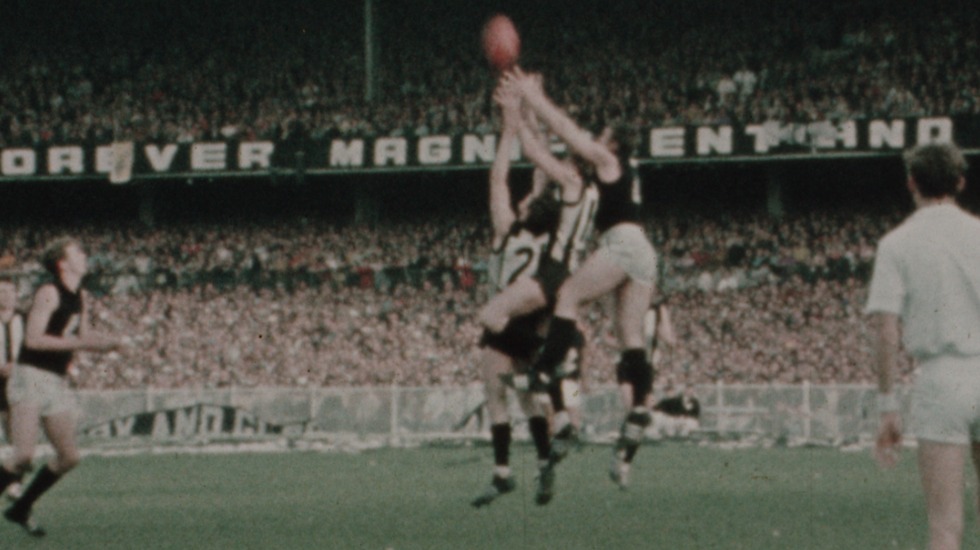
Carlton captain John Nicholls about to mark and kick a critical last-quarter goal as the Blues surge.
The film’s new perspectives breathe life into the game’s memories, from a close-up colour shot of Des Tuddenham’s blind turn goal to start the game and McKenna dribbling goals along the ground like Eddie Betts, to Brent Crosswell’s reckless abandon as he leaps for marks in a way that would startle in today’s footy.
The Channel 9 commentary also startles when Ian Cleland responds to booing of Carlton’s Aboriginal star Syd Jackson in the second quarter by vigorously defending him, stating that “this man is a coloured man we know, but he’s entitled to every bit of respect that anybody’s allowed”.
There are complexities to that back story, but it does serve as a reminder of a time that was only three years removed from the referendum on recognition of Australia’s first people as citizens.
The new angles show the reactions of players on the day like never before. A fresh-faced Robert Walls aghast at close quarters when his snap from the boundary is called touched in a decision that would go to the goal review today. But it’s the final stages that most enthused Smith making the film.
“In an era where there were virtually no goal celebrations whatsoever, Crosswell’s reaction when Carlton hits the front is a standout for me,” Smith says of a never-before-seen shot of Crosswell punching the air after his goal gives the Blues the lead for the first time.
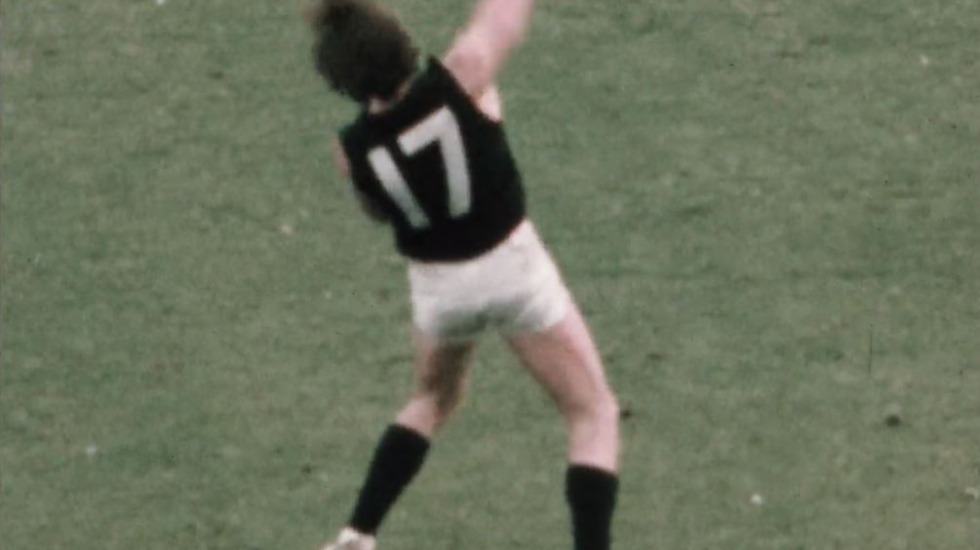
Brent Crosswell after giving Carlton the lead.
And then the piece de resistance, footage emerging of Barassi on the bench as he rides home the final tumbling Jesaulenko goal that bounces on and on through the goals, and which seals the famous premiership win.
The fall-out of this famed game simultaneously changed the pace of and creativity in the game forever, and cemented the legend of Barassi and the cult of the coach, one which lasts to this day.
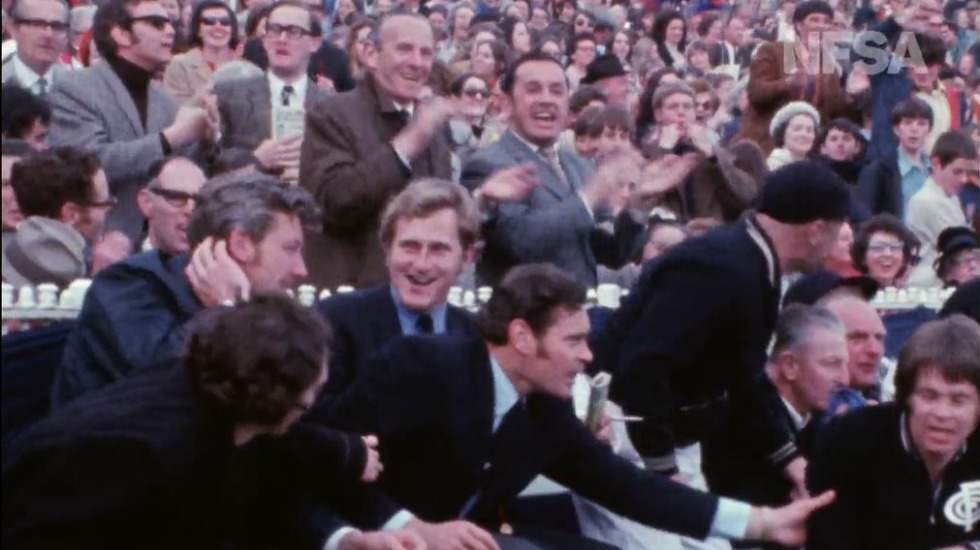
Carlton coach Ron Barassi still anxious as the Blues take an 11-point lead with little time left.
It’s magic that all footy fans need to see. If you’re new to it then check out the full match broadcast and Martin Flanagan’s excellent book of the match, “1970”.
You’ll find the highest skilled Grand Final of the era, frantic flowing play, uninhibited high marking, momentum swings and a fightback for the ages. It will confirm that it has as strong claims as any as the greatest decider of all.
Smith and NFSA’s film is not only a wonderful piece of historical art, 50 years on it is the perfect entrée to Grand Final week. As engrossing for those who were part of the record 121,696 at the MCG on the day, to those who know nothing of it.
You can watch the National Film and Sound Archive’s reinterpretation of the 1970 grand final HERE.

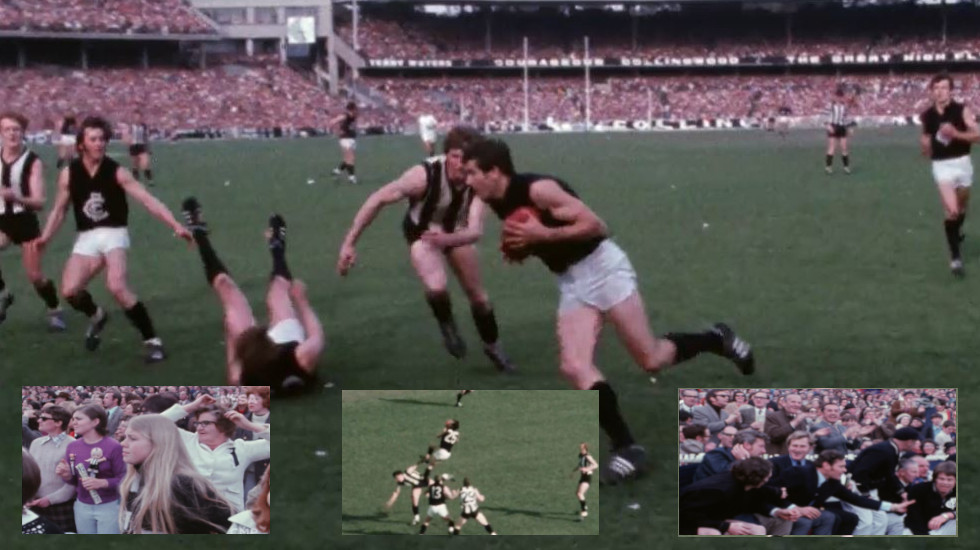
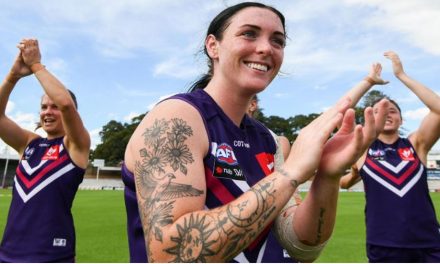
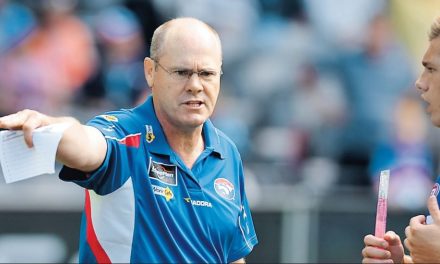
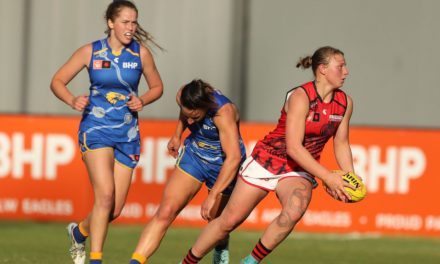
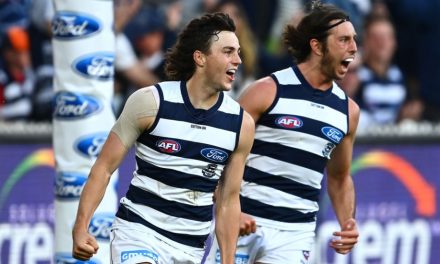
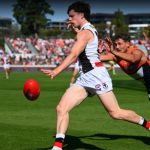
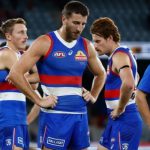

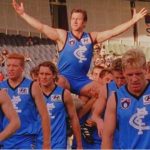
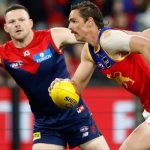

A great article about a great game which I attended as a 12 year old. I was a neutral St Kilda supporter but leant towards Collingwood after the saints had been thrashed in the prelim final by the Blues. I remember the crowd roaring and the high-pitched squealing as Carlton surged in the last quarter particularly the last 3 goals by Hopkins, Crosswell and jezza’s bouncing goal. Collingwood had a scare a fortnight earlier in the 2nd semi so perhaps should have been on guard- but that’s football.
It was great to hear the mix of commentators from the era including Ian Cleland, Geoff Leek, Butch Gale, Harry Beitzel, Bill Jacobs and even Norman Banks. A remarkable and enlightened comment by Ian Cleland criticising the crowd booing of Syd Jackson – so ahead of its time.
The atmosphere, the cheer squads, floggers, streamers, paper and the crowd all added to what was a momentous occasion the likes of which I doubt we will see again.
I have a friend in his 40’s who barracks for Collingwood and knew nothing about the 1970 GF when I watched the 2018 GF with him (yet another one that escaped the Magpies) which rather shocked me, even if you weren’t alive you would think he would have heard or seen or read something about that epic game